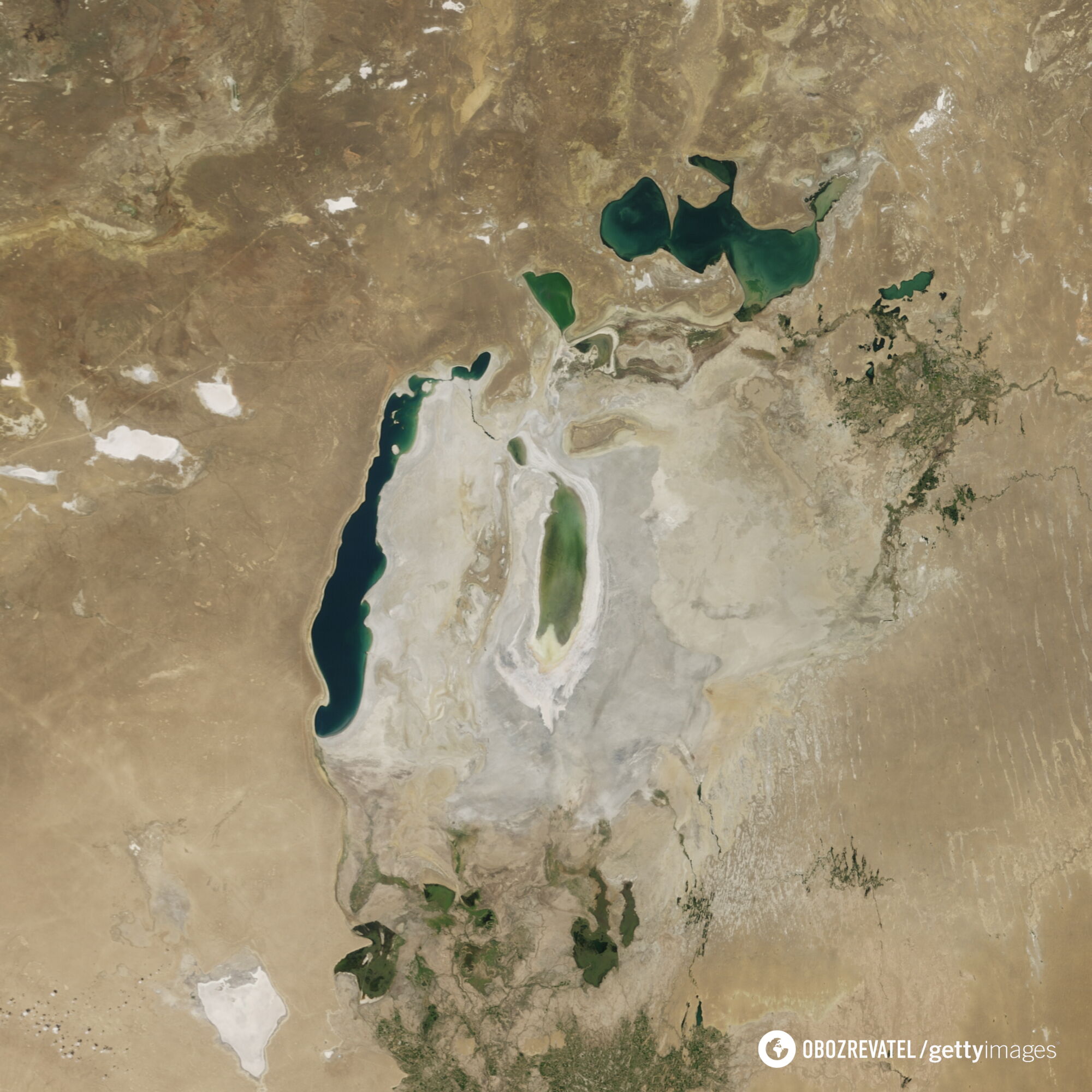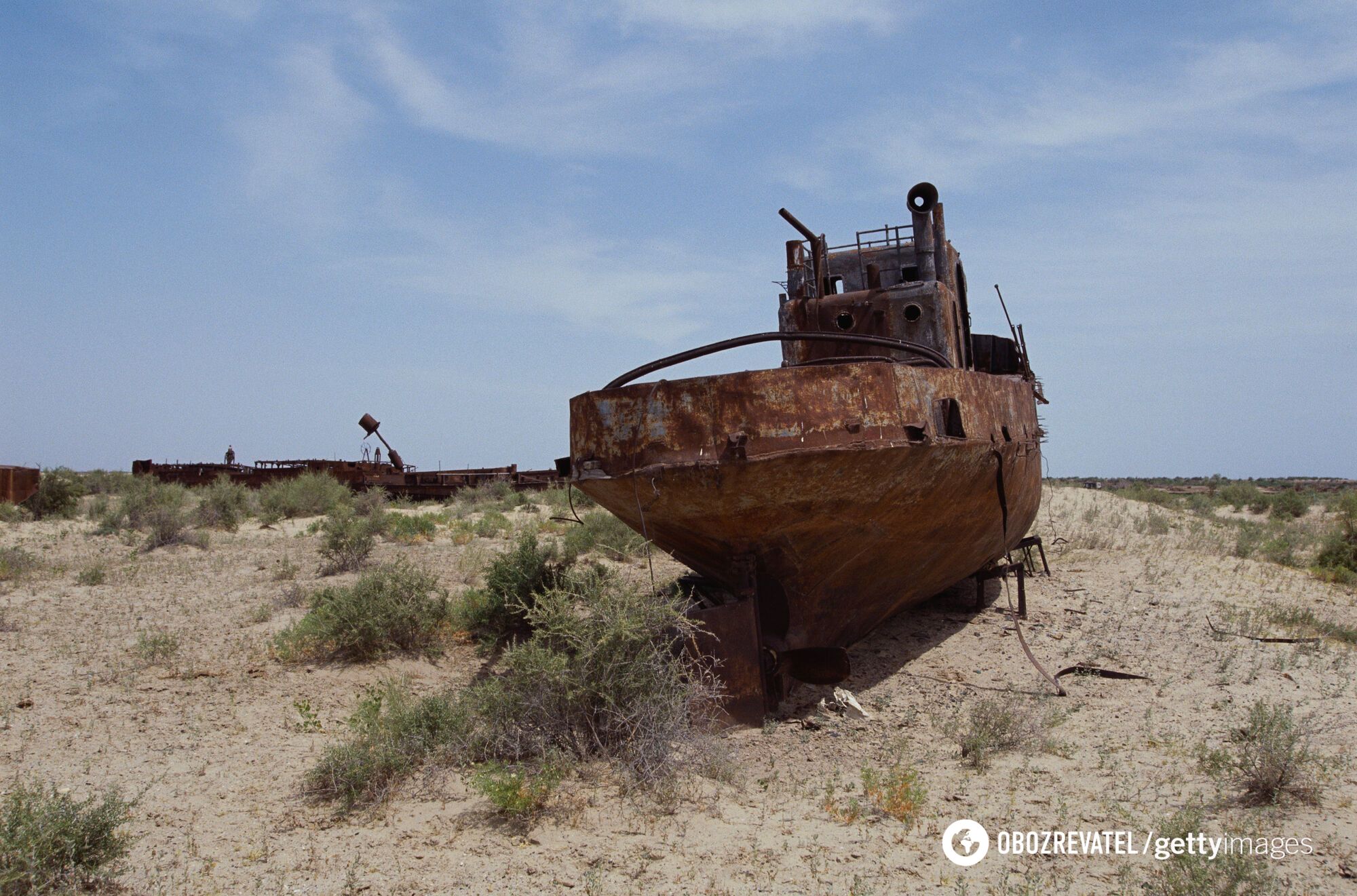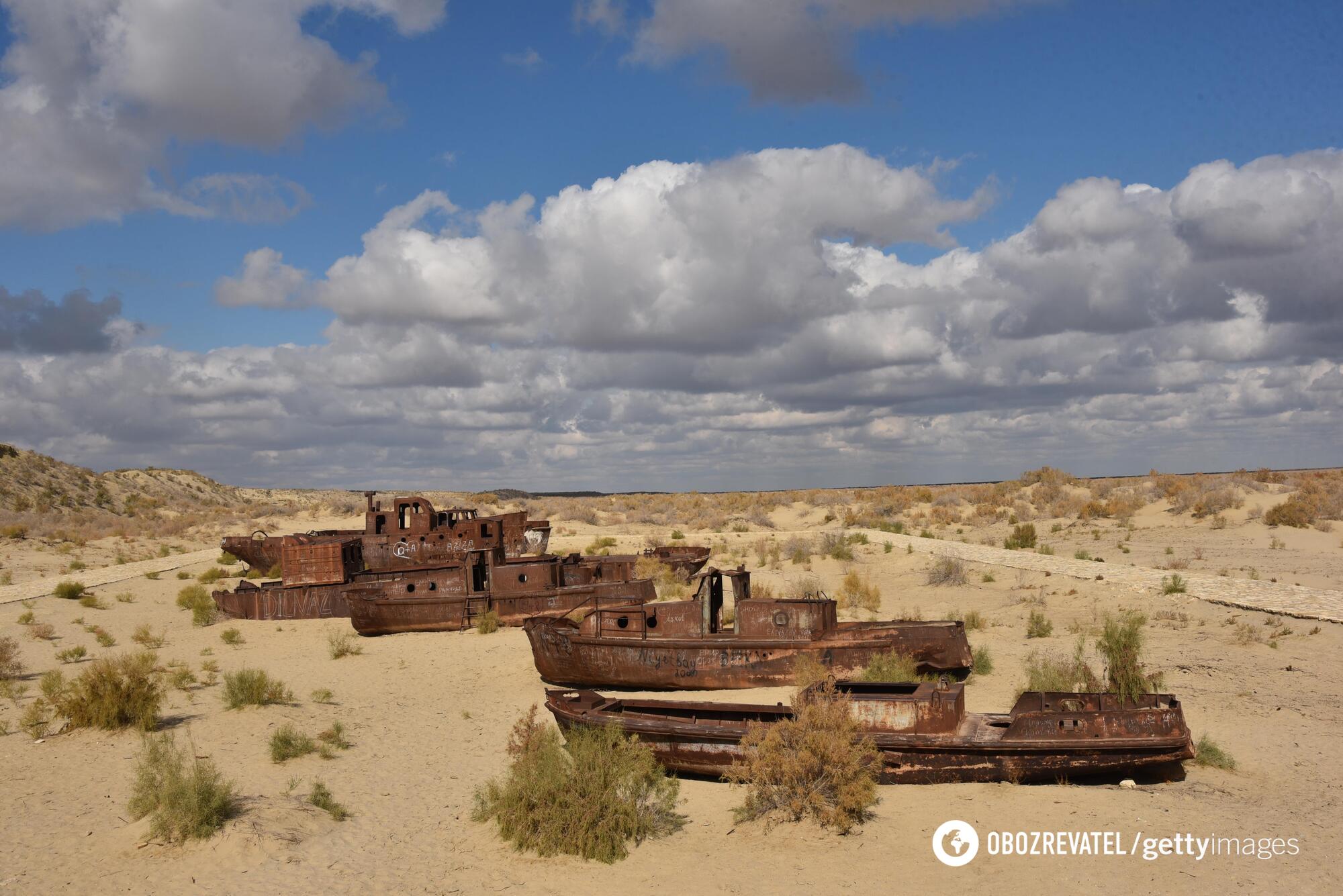News
The fourth largest lake in the world has turned into a deadly desert. Photo
Once the fourth largest lake (the Aral Sea) in the world, it has become a deadly desert. Located between Uzbekistan and Kazakhstan, it began to dry up in the 1960s, causing a serious environmental crisis in Central Asia.
According to the Turkish Daily Sabah, the lake used to cover an area of 68 thousand square meters, but by 2020, most of the reservoir had turned into the lifeless Aralkum desert. According to the latest reports, the lake's surface area has decreased almost nine times, the water level has dropped three times, and the volume has dropped fifteen times.
Today, the surface of the lake has shrunk to 8,000 square kilometers, the water volume has dropped to 75 cubic kilometers, and the maximum depth is only 20 meters. The lake continues to shrink, losing 80 to 110 centimeters of depth annually.
The recession of water has divided the lake into two parts, leaving part in Uzbekistan and the other in Kazakhstan. About 300 islands that once dotted the lake have merged with the surrounding land.
The main reason for the lake's drying up is that during the Soviet era, between 1960 and 1990, the region was transformed into a cotton production center. Agricultural irrigation expanded from 4.5 million to 7 million hectares, greatly increasing the need for water and reducing the flow of the Syr Darya and Amu Darya rivers that once supported the lake.
The Aralkum Desert, which arose on the site of the former Aral Sea, is often called the youngest desert in the world. Each year, sandstorms across Central Asia carry approximately 100 million tons of salt-laden dust, worsening environmental conditions.
According to scientists, traces of these dust particles have been found in the Pamir Mountains, where they are accelerating glacial melt. The lake's drying up has increased soil erosion and air pollution, threatening human health, living conditions, and biodiversity. The environmental catastrophe has affected the livelihoods of nearly 3 million people, contributing to the spread of disease and an increase in infant mortality.
The Aral Sea crisis remains one of the world's most alarming environmental disasters, and ongoing efforts to mitigate its impact offer a glimmer of hope for the future.
Only verified information is available on the OBOZ.UA Telegram channel and Viber. Do not fall for fakes!































